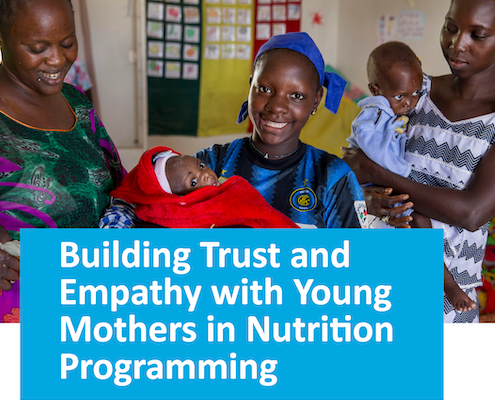
Peer-Reviewed Articles Supporting the SBC Evidence Base
English Democratic Republic of the Congo, Ethiopia, Francophone West Africa, Burkina Faso, Cameroon, Côte d’Ivoire, Niger, Togo, Guyana, Nigeria, Malawi, Liberia, Sierra Leone, Guatemala, El Salvador, Dominican Republic COVID-19, Sexual and Reproductive Health, Gender, Male Engagement, Global Health Security, Malaria, Maternal and Child Health, Mental Health, Nutrition, Provider Behavior Change, Service Delivery Peer-reviewed Advocacy, Audience Segmentation, Behavioral Science, Community Engagement, Digital, Human-centered Design, Knowledge Management, Monitoring and Evaluation, Social and Behavior Change Communication, Social and Structural, Risk Communication, Integration Breakthrough ACTIONThese peer-reviewed publications help SBC practitioners find strategies and scalable interventions to improve health outcomes.

Together We Can Client–Provider Package
English Tanzania Sexual and Reproductive Health, Provider Behavior Change, Service Delivery Implementation Guidance, Toolkit Human-centered Design, Social and Behavior Change Communication, Social and Structural Breakthrough ACTIONThis package helps people make informed choices about contraception and achieve reproductive intentions by improving family planning services.

Adaptations of Sick Child Feeding Tools in Guatemala
English, Spanish Guatemala Maternal and Child Health, Nutrition, Provider Behavior Change, Service Delivery Tool, Training Behavioral Science, Community Engagement, Social and Behavior Change Communication Breakthrough ACTIONThese tools are adapted from those developed in the DRC and are based on behavioral insights from mothers and caregivers in Guatemala.

The Power of SBC in Family Planning: Lessons from Rwanda
English Rwanda Sexual and Reproductive Health Case Study, Tool Advocacy Breakthrough ACTIONThis case study from Rwanda and advocacy support image help increase country-level investment in SBC for FP and health systems strengthening.

Evaluating the Sustainability and Impact of Gender Integration in RCCE Trainings in Guinea
English, French Guinea COVID-19, Gender, Global Health Security Fact Sheet/Brief Community Engagement, Risk Communication Breakthrough ACTIONThis technical brief presents findings from an impact evaluation of a pioneering training on gender integration in RCCE in Guinea.

Using Digital Mobile Technology to Complement Community and Mass Media Interventions
English Nigeria COVID-19, Sexual and Reproductive Health, Malaria, Maternal and Child Health, Nutrition, Tuberculosis Fact Sheet/Brief Digital Breakthrough ACTIONThese briefs describe how Breakthrough ACTION used mobile technology to share health messaging, disseminate mobile reminders, and as a learning tool.

Transforming Health Outcomes through SBC in Liberia
English Liberia Sexual and Reproductive Health, Malaria, Maternal and Child Health, Nutrition, Service Delivery, Youth Report Advocacy, Behavioral Science, Community Engagement, Human-centered Design, Knowledge Management, Social and Behavior Change Communication Breakthrough ACTIONThis report highlights the work of Breakthrough ACTION in Liberia, which worked to improve health outcomes across 12 counties using SBC.

Building Trust and Empathy with Young Mothers in Nutrition Programming
English Gender, Maternal and Child Health, Nutrition, Provider Behavior Change, Service Delivery, Youth Fact Sheet/Brief Advocacy, Community Engagement, Social and Behavior Change Communication Breakthrough ACTIONThis brief provides recommendations to prioritize trust and empathy to improve nutritional outcomes for young mothers and their children.

Nigeria Provider Behavior Change Learning Briefs
English Nigeria Malaria, Provider Behavior Change Fact Sheet/Brief Breakthrough ACTIONThese learning briefs detail how Breakthrough ACTION worked with health care providers in Nigeria to provide quality services.

